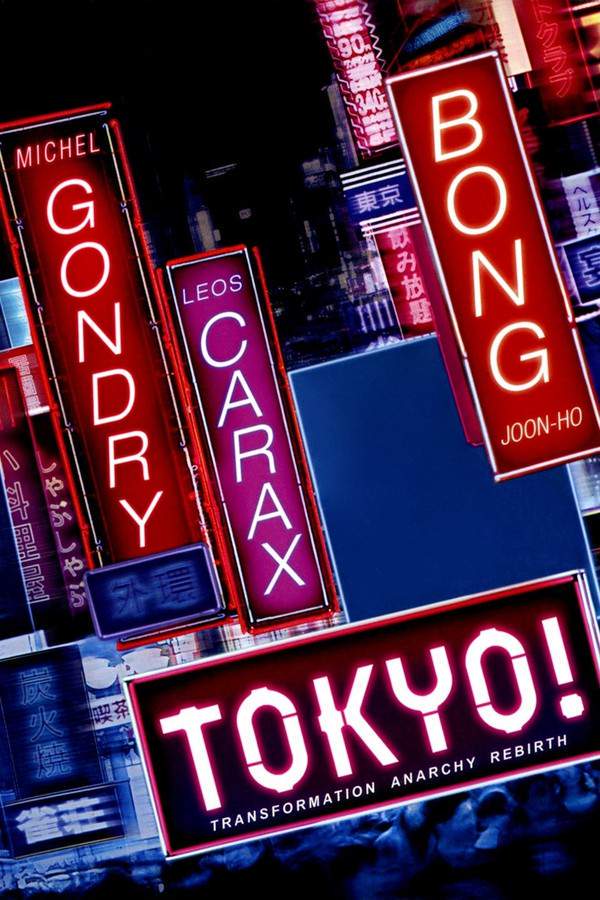Warning: spoilers below!
Haven’t seen Tokyo: The Last Megalopolis yet? This summary contains major spoilers. Bookmark the page, watch the movie, and come back for the full breakdown. If you're ready, scroll on and relive the story!
Tokyo: The Last Megalopolis (1988) – Full Plot Summary & Ending Explained
Read the complete plot breakdown of Tokyo: The Last Megalopolis (1988), including all key story events, major twists, and the ending explained in detail. Discover what really happened—and what it all means.
In 1912, Yasumasa Hirai explains to Baron Eiichi Shibusawa Tokyo’s long, haunted history, warning that the vengeful spirit of Taira no Masakado is powerful enough to tear the city apart if disturbed. To ward off this threat, Shibusawa enlists the Tsuchimikado sect to advise on how to make Tokyo a blessed capital. But their plans collide with the ambitions of the oni Yasunori Kato, a former Imperial Army lieutenant who seeks to awaken Masakado and unleash destruction. Kato sets his sights on Yukari Tatsumiya, Masakado’s direct descendant, aiming to use her as a medium to reach the sleeping spirit. The danger is spotted by Koda Rohan, whose vigilance interrupts the scheme, and Hirai and his followers move to safeguard Yukari inside the Tsuchimikado temple, where they perform the monoimi ceremony to shield her from harm. Kato and his forces respond with a frontal assault, unleashing shikigami upon the temple. Though Kato seizes Yukari and presses forward, Masakado will not grant him permission to take control of the living conduit. Inside, Ogai Mori confronts a troubling diagnosis: Yukari is pregnant with Kato’s child. When Emperor Meiji dies, ending the Meiji Era, Hirai’s devotion reaches its climax as he performs seppuku, a display of sacrifice that the visionaries interpret as foreshadowing Tokyo’s looming doom in the year 1923, the Year of the Pig.
The story then leaps forward to 1923, Tokyo, where Kato retreats to Dairen. There, he and his followers use magic to generate artificial seismic waves beneath Dairen that reverberate through the Earth and reach Japan. Back in the capital, Koda Rohan and Junichi Narumi intervene, wielding the Chart of Eight Directions (八陣圖), a potent form of Kimon Tonko sorcery, in an attempt to trap him. Although Kato slips away, the tremors echo across the sea and trigger the Great Kanto Earthquake, shifting the ground and the city’s fate in one brutal, defining moment. The earthquake’s reach and the menacing aura surrounding Kato magnify the sense that Tokyo’s past and present are fused in a perilous balance between ancient power and modern ambition.
By 1927, Torahiko Terada has been appointed by Noritsugu Hayakawa to oversee the construction of Japan’s first Tokyo Metro Ginza Line. As workers push through the tunnels, they repeatedly encounter Kato’s shikigami, forcing Terada to seek help from Dr. Makoto Nishimura, whose living creation, Gakutensoku, could be harnessed to speed the project and defend the city’s developing spine. In the meantime, Keiko Tatsumiya, a devoted miko, joins forces with feng shui master Shigemaru Kuroda to pinpoint Kato’s hideout. While Kuroda confronts a formidable Asura statue guarding the lair, Keiko races to confront Kato and halt his plans.
Kato’s attempts to awaken Masakado reach a perilous peak as he tries to trigger the birth of Masakado’s presence through Yukiko Tatsumiya, Yukiko Tatsumiya, the daughter of Yukari. But Yukiko’s power proves uncontrollable, stemming from a disturbing union between Yukari and her own brother Yoichiro, complicating Kato’s meddling with the past. As Gakutensoku ends its usefulness by self-destructing and severing the dragon vein linked to Kato’s temple, the antagonist’s last, desperate onmyodo maneuver to provoke another earthquake leaves him grievously wounded. Keiko is kidnapped and carried off to Manchuria, leaving Tokyo to confront a fragile peace that hangs in the balance.
The film closes with a festival scene, a city-wide celebration of the capital’s birth. The Tatsumiya family holds out hope for Keiko’s safe return, even as Kyoka Izumi—portrayed by Tamasaburō Bandō V—predicts that Kato’s influence may reappear someday. The narrative lingers on the tension between faith, science, and the restless spirits of a city that refuses to forget its layered, tumultuous history.
Last Updated: October 09, 2025 at 14:35
Unlock the Full Story of Tokyo: The Last Megalopolis
Don't stop at just watching — explore Tokyo: The Last Megalopolis in full detail. From the complete plot summary and scene-by-scene timeline to character breakdowns, thematic analysis, and a deep dive into the ending — every page helps you truly understand what Tokyo: The Last Megalopolis is all about. Plus, discover what's next after the movie.
Tokyo: The Last Megalopolis Timeline
Track the full timeline of Tokyo: The Last Megalopolis with every major event arranged chronologically. Perfect for decoding non-linear storytelling, flashbacks, or parallel narratives with a clear scene-by-scene breakdown.

Similar Movies to Tokyo: The Last Megalopolis
Discover movies like Tokyo: The Last Megalopolis that share similar genres, themes, and storytelling elements. Whether you’re drawn to the atmosphere, character arcs, or plot structure, these curated recommendations will help you explore more films you’ll love.
Explore More About Movie Tokyo: The Last Megalopolis
Tokyo: The Last Megalopolis (1988) Scene-by-Scene Movie Timeline
Tokyo: The Last Megalopolis (1988) Movie Characters, Themes & Settings
Tokyo: The Last Megalopolis (1988) Spoiler-Free Summary & Key Flow
Movies Like Tokyo: The Last Megalopolis – Similar Titles You’ll Enjoy
Cities of Last Things (2019) Ending Explained & Film Insights
Tokyo! (2009) Movie Recap & Themes
Tokyo Tribe (2015) Movie Recap & Themes
Tokyo Vampire Hotel (1000) Ending Explained & Film Insights
To Tokyo (2018) Detailed Story Recap
Godzilla: Tokyo S.O.S. (2003) Plot Summary & Ending Explained
Hikikomori: Tokyo Plastic (2004) Movie Recap & Themes
Neo Tokyo (1987) Complete Plot Breakdown
The Tokyo Project (1988) Complete Plot Breakdown
Time Burst: The Final Alliance (1989) Full Summary & Key Details
Tokyo Revengers (2021) Spoiler-Packed Plot Recap
Tokyo Revengers (1000) Spoiler-Packed Plot Recap
Tokyo Babylon 1999 (1993) Full Movie Breakdown
The Wicked City (1992) Full Movie Breakdown
Tokyo Revelation (1995) Ending Explained & Film Insights


















